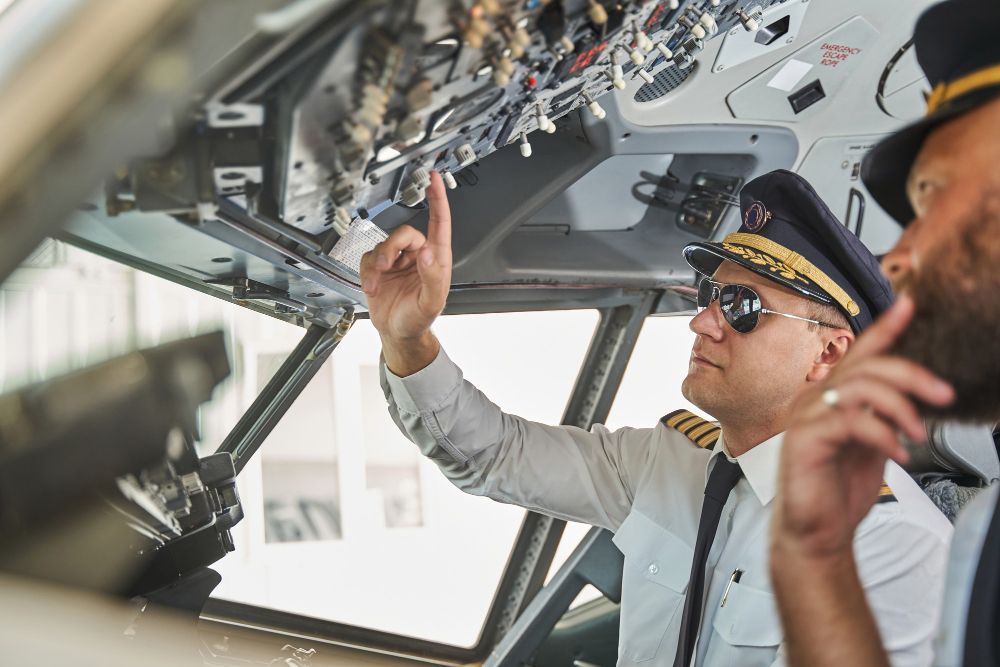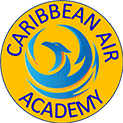How Technology is Revolutionizing Flight Training

The aviation industry has always been at the forefront of technological innovation, and flight training is no exception. From virtual reality simulators to AI-powered learning platforms, modern technology is transforming how aspiring pilots learn to fly. This evolution is particularly evident in premier training destinations like the Bahamas, where flight academies are embracing cutting-edge tools to create more effective, safer, and accessible training programs.
Gone are the days when flight training relied solely on textbooks and basic aircraft instrumentation. Today's aviation students benefit from immersive technologies that provide realistic training experiences while reducing costs and safety risks. These advancements are reshaping the entire landscape of pilot education, making it more efficient and comprehensive than ever before.
Flight Simulators: The Foundation of Modern Training
Flight simulators have become the cornerstone of contemporary pilot education. These sophisticated machines replicate real aircraft behavior with remarkable accuracy, allowing students to practice complex maneuvers and emergency procedures without leaving the ground.
Modern simulators offer several key advantages over traditional training methods. They provide unlimited practice opportunities for challenging scenarios that would be dangerous or impossible to recreate in actual flight. Students can experience severe weather conditions, system failures, and emergency situations repeatedly until they master the appropriate responses.
The cost-effectiveness of simulator training cannot be overstated. While the initial investment in simulation technology is substantial, the long-term savings are significant. Fuel costs, aircraft wear and tear, and weather-related delays all become non-factors when training occurs in a controlled simulator environment.
Virtual and Augmented Reality: Immersive Learning Experiences
Virtual reality (VR) and augmented reality (AR) technologies are taking flight training to unprecedented levels of immersion. VR headsets can transport students into realistic cockpit environments where they can interact with instruments and controls as if they were in an actual aircraft.
These technologies excel at teaching spatial awareness and navigation skills. Students can virtually fly over familiar terrain, practice approaches to different airports, and develop their understanding of three-dimensional flight dynamics. The visual and tactile feedback provided by VR systems helps reinforce learning in ways that traditional methods cannot match.
AR technology overlays digital information onto real-world environments, creating hybrid training experiences. Instructors can use AR to highlight specific instruments, display flight paths, or provide real-time feedback during actual flight lessons. This integration of digital and physical elements enhances comprehension and retention of critical concepts.
Digital Learning Platforms and Mobile Applications
The rise of digital learning platforms has made flight training more accessible and flexible than ever before. Students can now access comprehensive ground school materials, interactive quizzes, and video tutorials from anywhere with an internet connection.
Mobile applications have become particularly valuable for pilot training. These apps allow students to practice instrument reading, study aircraft systems, and review procedures during their commute or downtime. The convenience of mobile learning helps students maximize their study time and maintain consistent progress throughout their training.
Many digital platforms incorporate adaptive learning algorithms that adjust to individual student needs. These systems identify knowledge gaps and provide targeted exercises to address specific weaknesses, ensuring that each student receives personalized instruction tailored to their learning style and pace.
Artificial Intelligence and Machine Learning
Artificial intelligence is beginning to play a significant role in flight training evaluation and improvement. AI systems can analyze student performance data to identify patterns and provide insights that human instructors might miss.
Machine learning algorithms can track a student's progress across multiple training sessions, identifying areas where additional practice is needed. This data-driven approach to instruction helps optimize training schedules and ensures that students are adequately prepared before advancing to more complex maneuvers.
AI-powered systems can also provide real-time feedback during simulator sessions, offering immediate corrections and suggestions for improvement. This instant feedback loop accelerates the learning process and helps students develop proper techniques more quickly.
Enhanced Safety Through Technology
Safety has always been paramount in aviation training, and modern technology has significantly enhanced safety protocols. Advanced monitoring systems can track aircraft position, altitude, and speed in real-time, providing instructors with comprehensive situational awareness during training flights.
Electronic flight displays have replaced traditional analog instruments in many training aircraft, familiarizing students with the glass cockpit technology they'll encounter in modern commercial aircraft. These digital displays provide clearer information presentation and can be configured to simulate various aircraft types and scenarios.
Automated safety systems can intervene during training flights if parameters exceed safe limits, providing an additional layer of protection for both students and instructors. These systems allow for more aggressive training scenarios while maintaining appropriate safety margins.
The Bahamas: A Premier Destination for Technology-Enhanced Flight Training
The Bahamas has emerged as an exceptional location for modern flight training, combining ideal weather conditions with state-of-the-art training facilities. The archipelago's clear skies and diverse airspace provide excellent opportunities for students to practice various flight scenarios while utilizing the latest technological tools.
Flight training schools in the Bahamas are investing heavily in advanced simulation equipment and digital learning platforms. The region's proximity to the United States makes it an attractive option for American students seeking high-quality, technology-enhanced training at competitive prices.
The Bahamas' aviation infrastructure supports the integration of modern training technologies, with well-equipped airports and navigation facilities that complement digital training tools. This combination of natural advantages and technological capabilities creates an optimal learning environment for aspiring pilots.
Preparing Pilots for the Future of Aviation
Technology-enhanced flight training is not just about current capabilities; it's about preparing pilots for the future of aviation. As aircraft become increasingly automated and digitized, pilots need to be comfortable working with sophisticated computer systems and electronic interfaces.
Modern training programs emphasize human-machine interaction and automation management, skills that are essential in contemporary aviation. Students learn to work effectively with autopilot systems, flight management computers, and electronic navigation aids while maintaining the fundamental flying skills needed to operate aircraft safely.
The integration of technology in flight training also prepares students for the ongoing digital transformation of the aviation industry. From electronic logbooks to digital weather briefings, tomorrow's pilots will operate in an increasingly connected and data-driven environment.
Take Flight with Advanced Training Technology
The technological revolution in flight training is creating unprecedented opportunities for aspiring pilots to receive world-class education in some of the most beautiful locations on earth. The combination of cutting-edge training tools and ideal flying conditions makes this an exciting time to begin a career in aviation.
If you're interested in flight training in the Bahamas, contact Caribbean Air Academy today for more information about their technology-enhanced training programs and discover how modern aviation education can help you achieve your pilot dreams.
